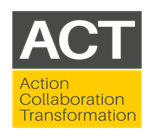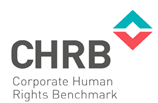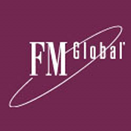PRIVATE SECTOR | ||
|---|---|---|
Name of Resource | Achieving Reduction of Child Labor in Support of Education (ARISE) |
Type | Platform for co-operation |
Country / jurisdiction | Global |
Organization | International Labour Organization, Japan Tobacco International, Winrock International |
Initiative launch date | 2011 |
Description | Achieving Reduction of Child Labor in Support of Education (ARISE) is a programme to help prevent and eliminate child labour in tobacco-growing communities where Japan Tobacco International does business. The partnership began in 2011, with much of that year devoted to building the partner relationships and developing the programme framework. The on-the-ground efforts began in Malawi and Brazil in early 2012 and in late 2012, in Zambia. |
Availability |
Name of Resource | ACT - Action, Collaboration, Transformation |
Type | Platform for co-operation, Monitoring and enforcement mechanism |
Country / jurisdiction | Global |
Organization | ACT |
Date of initial launch | 2017 |
Description | ACT (Action, Collaboration, Transformation) is an agreement between global brands and retailers and trade unions to transform the garment and textile industry and achieve living wages for workers through industry-wide collective bargaining linked to purchasing practices. ACT is a global commitment on living wages in the sector that provides a framework through which all relevant actors, including brands and retailers, trade unions, manufacturers, and governments, can exercise their responsibility and role in achieving living wages. ACT members have agreed the following the principles: a joint approach is needed where all participants in global supply chains assume their respective responsibilities in achieving freedom of association, collective bargaining and living wages; agreement on a living wage should be reached through collective bargaining between employers and workers and their representatives, at national industry levels; workers must be free and able to exercise their right to organize and bargain collectively in accordance with International Labour Organization Conventions. |
Availability | ENG: https://actonlivingwages.com/wp-content/uploads/2019/05/ACT_COMMS_Factsheet_05-2019-WEB-1.pdf |
Name of Resource | BlueView - Supply Chain Transparency to Protect People and Places |
Type | Platform for co-operation, Knowledge/information hub |
Country / jurisdiction | Global |
Organization | Bluenumber |
Initiative launch date | 1 November 2017 |
Description | Bluenumbers were introduced at the UN in 2015 as a tool to track and measure the Sustainable Development Goals (SDGs) from a beneficiary-centric perspective. Bluenumbers can identify, enable and empower individuals, such as small farmers or conscious consumers. We help businesses trace their supply chains, verify and analyse their data, and generate evidence to support their sustainability claims. BlueView is a public good using anonymized Bluenumbers to show the location of people relative to global risks and impacts such as fires and burning, deforestation and other hazards. These data sets of people and organizations at locations enable instant understanding of who is impacting, or being impacted, in climate zones or human development. Companies and governments work with Bluenumber to reach farmers and workers in complex and dynamic supply chains. Bluenumbers are currently focused on smallholder palm oil farmers in Malaysia and garment factory workers in Bangladesh. To avoid data slavery, farmers and workers own their own data. Companies share non-competitive data from private Bluenumber supply chain maps, which provide full traceability to the last farmer or worker. The companies visualize who produces their products, and gains valuable insight and analysis to report on livelihoods, education, health and other indicators for human rights and development. |
Availability |
Name of Resource | Business Actions Against Forced Labour |
Type | Corporate Policy, Guidance on policy / legislation implementation |
Country / jurisdiction | Global |
Organization | The Consumer Goods Forum |
Date of publishing | 2017 |
Description | The publication, Business Actions Against Forced Labour, is a practical demonstration of the collaborative spirit between businesses, government, civil society and workers’ organizations, showcasing concrete actions that are being taken to address and prevent forced labour in global supply chains. These actions include corporate efforts to implement Consumer Goods Forum’s Priority Industry Principles, a set of principles that, when applied on a global scale, can help address the conditions that contribute to forced labour: every worker should have freedom of movement, no worker should pay for a job and nor worker should be indebted or coerced to work. |
Availability |
Name of Resource | Construction and the Modern Slavery Act. Tackling Exploitation in the United Kingdom |
Type | Report/analysis |
Country / jurisdiction | United Kingdom |
Organization | The Chartered Institute of Building |
Date of publishing | May 2018 |
Description | This report examines the United Kingdom’s construction industry’s response to the Modern Slavery Act and the systemic problems that effects the rights of domestic and foreign workers in the sector. |
Availability | ENG: http://www.ciob.org/campaigns/tackling-modern-slavery-construction |
Name of Resource | Corporate Human Rights Benchmark. Pilot Methodology 2016 |
Type | Score / Measurement / Metric |
Country / jurisdiction | Global |
Organization | Corporate Human Rights Benchmark |
Date of publishing | March 2016 |
Description | The benchmark was developed to provide a comparative year-on-year snapshot of the human rights performance of the largest 500 companies of the world, looking at the policies, processes and practices they have in place to systematize their human rights approach and how they respond in case of finding labour exploitation and other human rights abuses in their supply chain. |
Availability | ENG: https://business-humanrights.org/sites/default/files/CHRB_report_06_singles.pdf |
Name of Resource | Daimler AG - Human Rights Respect System |
Type | Corporate Policy |
Country / jurisdiction | Global |
Organization | Daimler |
Date of publishing | May 2018 |
Description | This corporate policy sets to ensure that Daimler’s products contain only raw materials that have been mined and produced without human rights violations. Due to the complexity of the supply chains and the multitude of raw materials in their products, a risk-based and strategic approach is required. The Human Rights Respect System aims to recognize and avoid risks and possible negative effects of corporate action on upholding human rights at an early stage. The Human Rights Respect System will be used both in Daimler’s supply chain as well as in their majority held entities. The System draws on Daimler’s Compliance Management System, which consists of four steps: risk assessment, programme implementation, monitoring and reporting. |
Availability | ENG: https://www.daimler.com/sustainability/responsible-conduct/human-rights/ |
Name of Resource | FM Global Resilience Index |
Type | Score / Measurement / Metric |
Country / jurisdiction | Global |
Organization | FM Global |
Date of initial launch | 2018 |
Description | The FM Global Resilience Index is a data-driven tool that ranks 130 countries and territories according to their enterprise resilience to disruptive events. It aggregates 12 drivers of resilience into three factors (categories)—economic, risk quality and supply chain. The supply chain factor includes corruption control, quality of infrastructure, and quality of local suppliers and visibility of supply chain across a country. With the index, executives will be able to prioritize their enterprise risk management and investment/expansion decisions and gain powerful insights about risk and opportunities to guide their strategy in five key areas: determine which locales are most resilient to disruptive events; site new facilities or expand existing ones; select suppliers; evaluate established supply chains; identify customers who may be vulnerable. |
Availability |
Name of Resource | HP Supply Chain Foreign Migrant Worker Standard |
Type | Policy/standard |
Country / jurisdiction | Global |
Organization | Hewlett Packard |
Date of initial launch | 2014 |
Description | The objective of this standard is to set forth the minimum requirements for the appropriate and ethical recruitment and management of foreign migrant workers by or on behalf of suppliers doing business with HP. The standard applies to all suppliers and supplier facilities globally that are involved in manufacturing HP’s products, packaging, parts, components, subassemblies, and materials, or involved in processes related to that manufacturing, and all suppliers that provide services to or on behalf of HP. |
Availability |
Name of Resource | Human Rights Outlook 2016 |
Type | Report/analysis |
Country / jurisdiction | Global |
Organization | Verisk Maplecroft |
Date of publishing | 15 February 2016 |
Description | The report analyses the 10 most significant human rights issues impacting business among the recruitment of migrants and refugees into forced labour; a lack of information on labour practices deep within the supply chain; and inadequate oversight of suppliers, which could be the biggest threats to the brand reputation of global companies over the next year. The report identifies the primary emerging risk areas for companies with global supply chains and provides strategic insight into the human rights landscape to raise awareness of responsible procurement practices. |
Availability | ENG: https://maplecroft.com/portfolio/new-analysis/2016/02/15/human-rights-outlook-2016/ |
Name of Resource | Human Trafficking Risk Index |
Type | Score / Measurement / Metric |
Country / jurisdiction | Global |
Organization | Dun and Bradstreet |
Date of publishing | 2016 |
Description | The Human Trafficking Risk index provides insights into where potential human trafficking may exist deep within companies’ supply chain – Dun & Bradstreet created this proprietary scoring index by “marrying” its corporate database –with more than 280 million company records – to data from the International Labor Affairs Bureau and the United Nations Department of State. Forced labour is more likely to occur in certain geographic regions and product sets, so the data creates an analytic index that evaluates the potential for one of company’s suppliers to be involved in human trafficking based on the location of the supplier and the product or commodity type they provide. HTR creates an automated, repeatable, closed-loop process to proactively monitor the supply chain for potential human trafficking violations. |
Availability | ENG: http://www.dnb-nederland.nl/human-trafficking-risk-index |
Name of Resource | IWAY – IKEA code of conduct |
Type | Corporate Policy |
Country / jurisdiction | Global |
Organization | IKEA |
Date | 2000 |
Description | IWAY is the IKEA code of conduct, which specifies the requirements that the company places on suppliers of products and services and details what they can expect in return from IKEA. In addition to the main document, there are several industry-specific supplements and a special code of conduct for child labour. IKEA suppliers are responsible for communicating the content of the IKEA code of conduct to their employees and sub-suppliers. |
Availability | ENG: https://www.ikea.com/ms/ar_QA/about_ikea/pdf/SCGlobal_IWAYSTDVers4.pdf |
Name of Resource | Joint Audit Cooperation Supply Chain Sustainability Guidelines |
Type | Guidance on policy / legislation implementation |
Country / jurisdiction | Global |
Organization | Joint Audit Cooperation |
Date of publishing | June 2015 |
Description | The Joint Audit Cooperation is a collective of telecommunication companies aiming to promote safe and fair working conditions as well as responsible, social and environmental management by verifying, assessing and promoting sustainability standards and transfer of best practice across its supply chain. These JAC Sustainability Guidelines have been established to complement the respective supplier codes of JAC member companies. Suppliers are encouraged to implement the requirements contained in the guidelines and go further in implementing key performance indicators in this document to achieve compliance. |
Availability | ENG: http://jac-initiative.com/download/jac-supply-chain-guidelines/ |
Name of Resource | Marks and Spencer - Forced Labour Toolkit for International Suppliers and Partners |
Type | Toolkit |
Country / jurisdiction | Global |
Organization | Marks and Spencer |
Date of publishing | 2018 |
Description | This Toolkit supports international suppliers and franchise partners of Marks and Spencer to show leadership in tackling forced labour in their business practices, operations and supply chains. Increasing legal requirements and expectations from customers, consumers, employees, governments and stakeholders mean that responsible businesses need to put human rights and tackling forced labour at the heart of their business approaches. |
Availability |
Name of Resource | Marks and Spencer Interactive map |
Type | Traceability/practical tool, Interactive source |
Country / jurisdiction | Global |
Organization | Marks and Spencer |
Date of initial launch | 2019 |
Description | The factories featured on this interactive map are contracted by M&S direct suppliers to produce finished goods which are ready for retail and bear the company’s brand logos and marks. Included are all first-tier manufacturing sites which produce M&S branded clothing, clothing accessories, footwear, beauty, food, alcoholic and non-alcoholic drinks, homeware, giftware and household products. Excluded are some small continental meat and artisanal cheese suppliers. Other lower tier factories used by M&S suppliers, for example those which manufacture fabric, yarn and primary food processors are also not included on the map. As a condition of trade, M&S requires all direct suppliers and contracted factories to join the Supplier Ethical Data Exchange (Sedex), a web-based database where suppliers disclose information (labour standards, health and safety, environmental) including self-assessments and site audit reports. |
Availability |
Name of Resource | Modern Slavery Index |
Type | Report/analysis |
Country / jurisdiction | Global |
Organization | Verisk Maplecroft |
Date of publishing | 2018 |
Description | The Modern Slavery Index quantifies the risk of association with forced labour, bonded labour, human trafficking and child slave labour for businesses in 198 countries. The Modern Slavery Index assesses the risk to business of exposure to practices of slavery, servitude, trafficking in persons and forced labour. The index is specifically designed to help companies identify where the risk of modern slavery is greatest across their business and supply chain in order to better protect workers and comply with new and emerging legislation. The Modern Slavery Index forms part of Verisk Maplecroft’s Human Rights Data Set, which features 31 risk indices covering civil and political rights, labour rights, human security, remedy, and development issues. |
Availability |
Name of Resource | Nike Manufacturing map |
Type | Traceability/practical tool, Interactive source |
Country / jurisdiction | Global |
Organization | Nike |
Date of initial launch | June 2019 |
Description | This interactive map showcases information on the independent factories and material suppliers used to manufacture NIKE products, including the name and location of each factory and the types of products they produce. For finished good facilities, the tool also includes information about the workers at each factory. More information on Nike’s commitment to making product responsibly is available at https://purpose.nike.com/ |
Availability |















